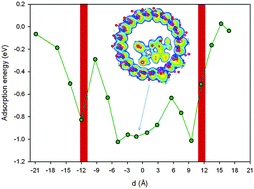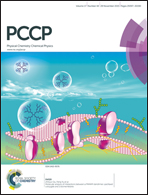Theoretical demonstration of the potentiality of boron nitride nanotubes to encapsulate anticancer molecule
Abstract
Anticancer drug transport is now becoming an important scientific challenge since it would allow localizing the drug release near the tumor cell, avoiding secondary medical effects. We present theoretical results, based on density functional theory and molecular dynamics simulations, which demonstrate the stability of functionalized single (10,10) boron nitride nanotubes (BNNTs) filled with anticancer molecule such as carboplatin (CPT). For this functionalized system we determine the dependence of the adsorption energy on the molecule displacement near the inner BNNTs surface, together with their local morphological and electrical changes and compare the values to the adsorption energy obtained on the outer surface. Quantum simulations show that the most stable physisorption state is located inside the nanotube, with no net charge transfer. This demonstrates that chemotherapeutic encapsulation is the most favorable way to transport drug molecules. The solvent effect and dispersion repulsion contributions are then taken into account using molecular dynamics simulations. Our results confirm that carboplatin therapeutic agents are not affected when they are adsorbed inside BNNTs by the surrounding water molecules.


 Please wait while we load your content...
Please wait while we load your content...